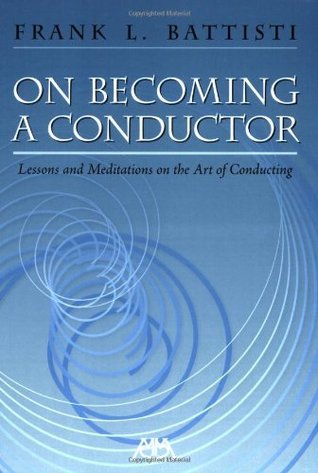Kindle Notes & Highlights
Helen Epstein, writing in the New York Times ("Learning the'Impossible' Art of Conducting," 1981), states that conductors
... [had to have] ... the strength of a dancer; the facial expressiveness of an actor; the organizational acumen of an executive; the interpersonal skills of a psychologist; the inspirational capacity of a religious leader; and, of course, a musicianship so sensitive and compelling that loo other musicians will accept his reading of a given work as their
own."
A conductor, it seems, has to be a musician with a commanding presence, a passion for music, a fabulous memory, creative imagination, great leadership skills, a psychologist, a teacher, an organizer, and a fount of inspiration.
There is, of course, no substitute for work. I myself practice constantly, as I have all my life. I have been told I play the cello with the ease of a bird flying. I do not know with how much effort a bird learns to fly, but I do know what effort has gone into my cello. What seems ease of performance comes from the greatest labor.
-PABLO CASALS
Individuals who strive to be the "best," are never "satisfied."
-FRANK BATTISTI
The formulation of concert programs is one of the conductor's most important and challenging responsibilities. The conductor's musical taste, knowledge of literature, and imagination influences both his/her selection of pieces and their placement on a program. Factors to be considered in formulating programs:
level of audiences sophistication (understanding/appreciation)
expressive character/style of pieces
key/tonal relationship of pieces
tempo relationship of pieces
length of each piece
length of intermission
length of entire program-potential endurance problems especially for brass players
logistics-time needed for changes between pieces (moving/relocating equipment, instruments, players)
. total amount of available rehearsal time
The overall length of a program should be limited to 9o minutes and never exceed 105 minutes. This includes the time needed for the performance of the music, making personnel and equipment/instrument changes, applause, and intermission. Select programs that c...
This highlight has been truncated due to consecutive passage length restrictions.
Works featuring a soloist (concertos) are usually placed immediately before or after intermission.
I recommend that two-thirds of a program consist of familiar works and one third be new ones
Tempo-If tempo/metronome markings in a score are small and cannot be seen easily, add larger ones in red pencil. Whenever a tempo changes, write in the old tempo (in parentheses) and then the new one.
2. Entrances-Place the abbreviated name of the entering instrument and/or section in front of the entrance in large letters.
4. Meter signatures-Place enlarged meter signatures over any that are small/hard to read and in passa...
This highlight has been truncated due to consecutive passage length restrictions.
8. Multiple score systems-If a page has more than one system on it, place a thick, wavy, red, or yellow line between them.
Asymmetrical meters-Mark the note groupings as follows: a triangle for note groupings of threes and two vertical lines for note groupings of twos.
In musical notation we have a very limited, yet universally agreed upon, understanding of let us say, the difference intended between "piano" and "forte:' On the other hand, we have not agreed upon meaning at all regarding the precise measurement of"piano:' It is simply left to the individual performer's perspective ... The danger is that we will tend to fixate on the symbol and not what it represents "experientially."
only factor that counts [in conducting] is the power of [one's] personality."'
When conducting, the conductor listens, compares, evaluates, and through the use of gestures, communicates what he/she wants from players in order to realize his/her imagined ideal.
It is very difficult for players to ignore the message conveyed by the right-hand gesture.
Eye contact with players is extremely important, especially before giving cues/preparing entrances.
Keeping aids, such as cues, to a minimum fosters a need for players to remain attentive and involved in the music-making process.
Great conductors" ... are able to persuade every performer ... to feel that he too is a recreative artist, that he too is leading and directing, though he is but following the baton.'',
lay in "making music visible with your hands:' His approach [required] a physical relationship with the music as though one were sculpting sound.


